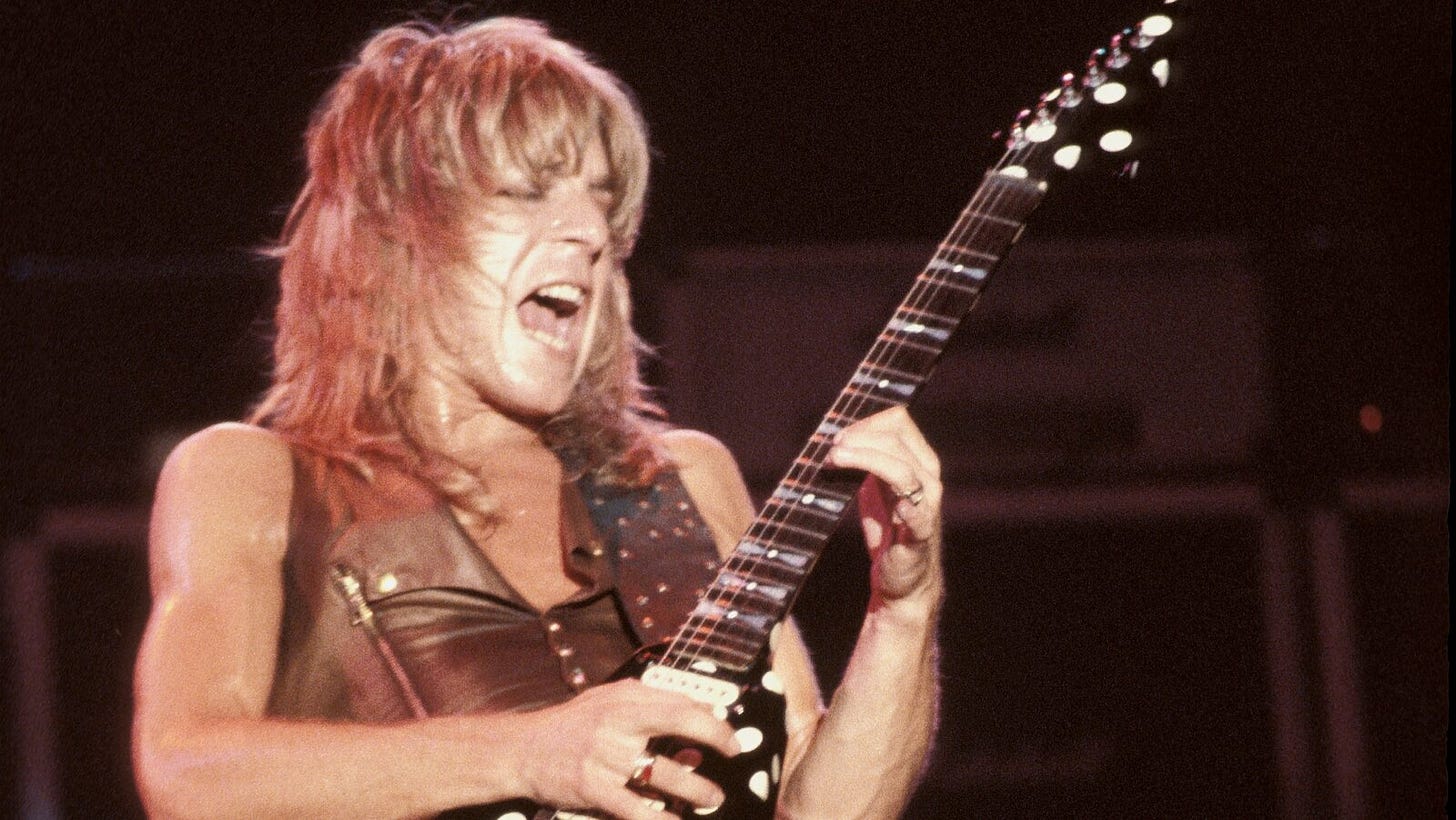Randy Rhoads: Reflections of a Guitar Icon
This illuminating new documentary takes a look at the metal guitar legend who left his stamp on the music industry despite dying tragically at age 25.
Randy Rhoads lived for just 25 years, but even today young guitarists learn his riffs and songs. You can see some random people playing them in the end credits of '“Randy Rhoads: Reflections of a Guitar Icon,” an illuminating new documentary about the co-founder of Quiet Riot and lead guitarist on Ozzy Osborne’s first two solo albums.
Ironically, Quiet Riot didn’t really break out as a metal rock until the early 1980s, after Rhoads had left the band to go with Ozzy, who was striking out himself after being dumped by Black Sabbath. Even though Quiet Riot was hugely popular on the Los Angeles club circuit, and by all accounts Rhoads was one of the best, most original guitarists anybody had ever heard.
Rhoads died suddenly in 1982 during a joyride in an airplane while the tour bus was stopped for repairs in Leesburg, Fla. It’s a testament to the measure of his talent and influence that his name still rings out among the guitar kings of that era, people like Eddie Van Halen, with whom he shared a brooding cross-town rivalry.
Director Andre Relis charts us through a fairly typical rock biopic story, starting with Rhoads’ roots as the son of a classical music school owner, Delores, his father splitting while he was still a toddler. In his mid-teens he was already a guitar virtuoso, and along with friend Kelly Garni, whom he taught to play the bass, they formed their own band, adding lead singer Kevin Dubrow and drummer Drew Forsyth.
Dubrow himself carried on with Quiet Riot through its golden years, passing away himself in 2007, though there’s ample audio and video footage of him talking about Rhoads, and Forsyth sits for extensive, frank interviews. Rudy Sarzo, who later replaced Garni in Quiet Riot and eventually followed Rhoads to Ozzy’s band, also speaks glowingly of his bandmate.
Unlike the usual tales you hear of young rock stars who become hooked on drugs, sex and runaway egotism, by all accounts Rhoads was a quietly charismatic figure who truly devoted himself to his craft. Ozzy says Rhoads never did drugs and rarely even drank. But he would go off in a room and practice for hours and hours, day after day.
One of the most interesting things I learned in this documentary is Rhoads’ commitment to lifelong learning — both as a student and teacher. In between gigs with Quiet Riot, he continued teaching at his mom’s Musina Music School in north Hollywood. And even after he broke out big, doing world tours with Ozzy, he enrolled in classes to learn classic acoustic guitar.
The film is now available for streaming on Amazon Prime Video.
Of course, there’s plenty of footage of Rhoads shredding in guitar solos or playing the iconic riffs that made him big, like “Crazy Train” or “Diary of a Madman.” I was never a metal guy, but it’s not hard to grasp how technically accomplished Rhoads was, able to play with speed and polish, or slow it down into crunchy blues territory.
One roadie who worked as his guitar tech admits that most solos end up being pretty boring after a little while. But Rhoads could hold an audience transfixed for 10 minutes or longer, building rather than bleeding momentum from the band’s set.
There’s the usual intra-band conflicts, although he and Dubrow seemed a good pairing between lead man and artistic center of Quiet Riot. It was just a simple matter of guys playing together for years, packing nightclubs but unable to land a major record label, for whatever reason. Their first album was bought by a label that promptly went bankrupt, selling the rights for its release only in Japan.
Garni was tossed from the band simply because his drinking problem finally outweighed his ability to perform. A golden nugget from the quest to replace him: one person brought in was Nikki Sixx, future star of Mötley Crüe. At the time, though, Sixx was so young and raw that he couldn’t even read music or know how to tune a bass, much less play it.
When the offer came along for Rhoads to jump into the stratosphere with Ozzy, it seemed to everyone the most logical thing to do. Even his girlfriend, Jodi Raskin, who worked on costumes for the band and dated Dubrow before Rhoads, acknowledges that no one really begrudged him such a prime opportunity — though Forsyth says Dubrow long harbored delusions that Rhoads would one day rejoin Quiet Riot.
Ironically, it’s quite likely that if Randy Rhoads had stayed in Quiet Riot neither his old band or he would have the names they do today in the music industry. Sometimes the hardest thing to do is knowing when to end a good thing in the hopes of finding a better thing.
Rhoads made the jump and became a legend. Rather than making us regret all the music we missed out on due to his early death, this probing doc makes us appreciate what we got before he left us.





